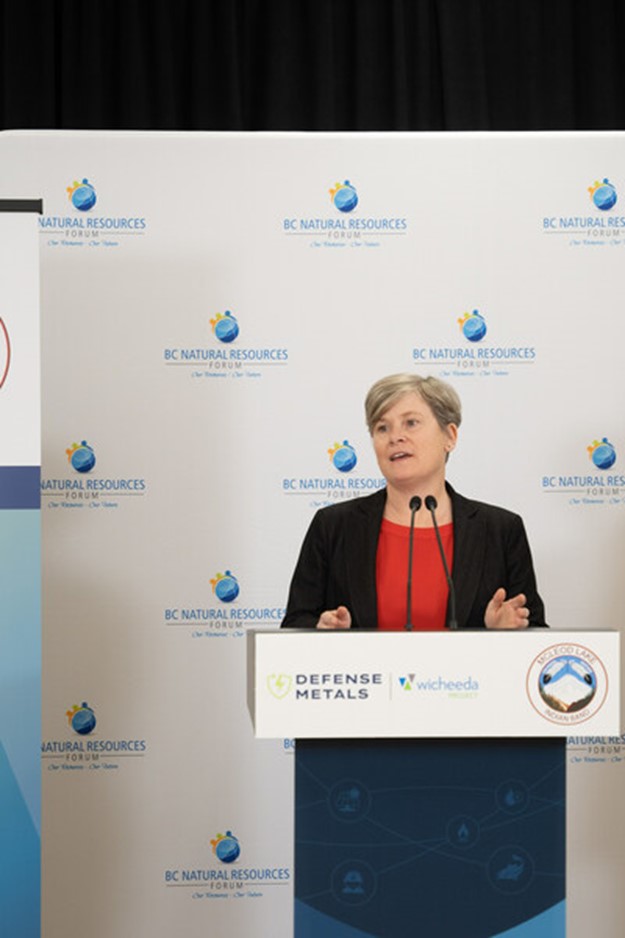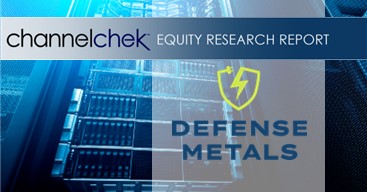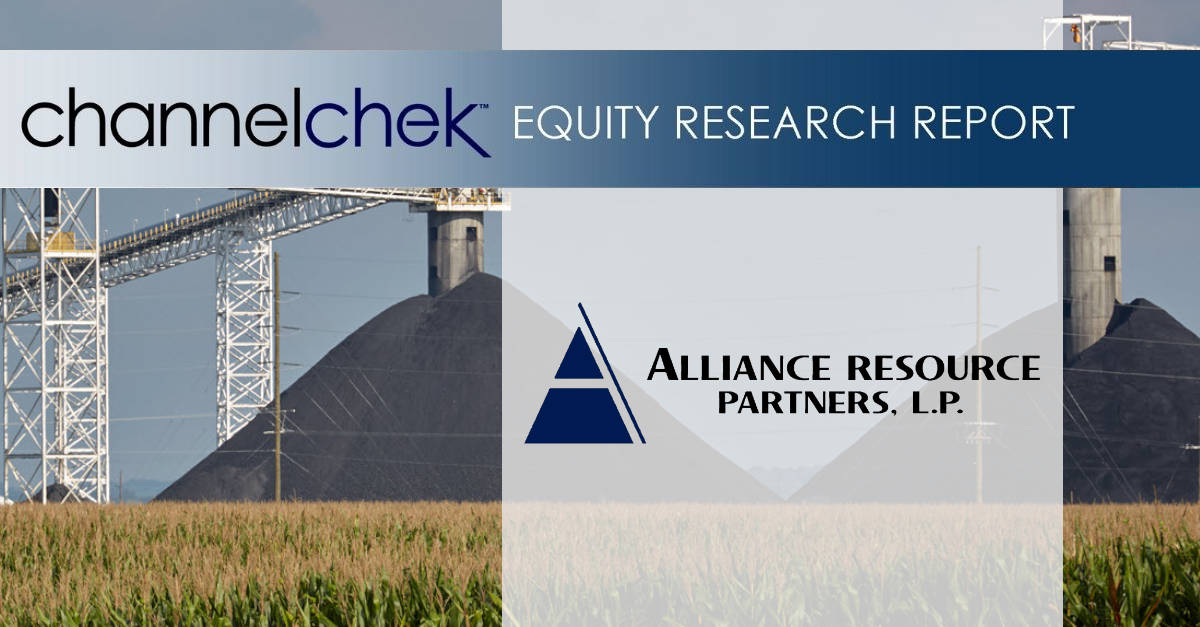
Research News and Market Data on DFMTF
NEWS PROVIDED BY
18 Jan, 2024, 08:00 ET
Equity Partnership and Co-Design Agreement Set New Standards in Collaborative Project Development in the Critical Minerals Transition
VANCOUVER, BC, Jan. 18, 2024 /PRNewswire/ – The McLeod Lake Indian Band (MLIB) and Defense Metals Corp. (Defense Metals), announced today a strategic Equity Partnership and Co-Design Agreement, solidifying their joint commitment to the successful advancement of the Wicheeda Project, a rare earth elements (REE) project in central British Columbia.

Minister of Energy, Mines and Low Carbon Innovation, Josie Osborne speaks at the announcement today. (CNW Group/Defense Metals Corp.)
McLeod Lake Indian Band, recognizing the significant potential of the Wicheeda Project, has purchased a meaningful equity stake in Defense Metals. This strategic investment will showcase MLIB’s long-term commitment to the project’s success and expects to further cement their position as a key participant in its development. MLIB now holds approximately 2.6 million common shares of Defense Metals.
Simultaneously, MLIB and Defense Metals have entered into a Co-Design Agreement (the Agreement), setting a new standard for collaborative project development. The Agreement emphasizes a joint planning approach, empowering MLIB to play an integral part in the design and decision-making process in the technical, social, engineering and environmental aspects of the Wicheeda Project.
This unique agreement between McLeod Lake Indian Band and Defense Metals signals a transformative moment in the collaborative development of mining projects – particularly in the global push for Critical Minerals Projects. Central to this collaboration is the Wicheeda’s contribution to the clean energy transition in British Columbia. With a targeted annual production equivalent to approximately 10% of current global production, the project has the potential to become a significant supplier of rare earth elements.
McLeod Lake Indian Band
“McLeod Lake Indian Band values its partnership with Defense Metals, and together, we are pioneering a new standard in collaborative project development, which is a true form of reconciliation. We’re proud to be a part of a project that will be a key contributor to global energy transition goals, and one that will deliver long-term economic benefits to our community for generations to come.” – McLeod Lake Indian Band Chief Harley Chingee.
Defense Metals Corp.
“We’re proud to partner with MLIB and these strategic agreements exemplify a shared vision and commitment to realizing the full potential of the Wicheeda Project and the positive impact it will have on the global Critical Minerals Transition. Through both agreements, McLeod Lake Indian Band stands to reap mutual benefits from our combined efforts around the Wicheeda Project.” – CEO of Defense Metals, Craig Taylor.
Minister of Energy, Mines and Low Carbon Innovation
“The collaboration between Defense Metals and McLeod Lake Indian Band demonstrates how early-stage consultation with First Nations can bring important projects to life in a way that benefits everyone. Partnerships like this play a pivotal role in shaping BC’s natural resources future, as we lay a concrete path toward achieving our net-zero goals through collaboration and advancing reconciliation.” – Josie Osborne, Minister of Energy, Mines and Low Carbon Innovation.
About Defense Metals Corp. and its Wicheeda Project
Defense Metals Corp. is a mineral exploration and development company focused on the development of its 100% owned, 8,301-hectare (~20,534-acre) rare earth element Wicheeda Project that is located on the traditional territory of the McLeod Lake Indian Band in British Columbia, Canada.
The Wicheeda Project, approximately 80 kilometres northeast of the city of Prince George, is readily accessible by all-weather gravel roads and has nearby infrastructure, including rail and hydro power. The nearby Canadian National Railway and major highways allow easy access to the port facilities at Prince Rupert, the closest major North American port to Asia.
Defense Metals Corp. trades on the TSX Venture Exchange under the symbol “DEFN”, in the United States, trading symbol “DFMTF” on the OTCQB and in Germany on the Frankfurt Exchange under “35D”.
Defense Metals is a proud member of Discovery Group. For more information please visit:
http://www.discoverygroup.ca/
Media Contact:
Sarah Norman
Director of Strategic Communications
One-Eighty Consulting Group
snorman@one-eighty.ca
Qualified Person
Kristopher J. Raffle, P.Geo. (B.C.), Principal and Consultant of APEX Geoscience Ltd. of Edmonton, Alberta, and a “Qualified Person” as defined in NI 43-101 has reviewed and approved the scientific and technical information and verified the data contained in this news release as it relates to the Wicheeda REE Project.
Cautionary Statement Regarding “Forward-Looking” Information
This news release contains “forward‐looking information or statements” within the meaning of applicable securities laws, which may include, without limitation, any statements (expressed or implied) relating to: advancing the Wicheeda REE Project, MLIB’s expected investment in the Company, the potential production of rare earth elements, the benefits from combined efforts with MLIB, and the technical, financial and business prospects of the Company, its project and other matters. Forward-looking statements are typically identified by words such as “plan,” “believe,” “expect,” “anticipate,” “intend,” “outlook,” “estimate,” “forecast,” “project,” “continue,” “could,” “may,” “might,” “possible,” “potential,” “predict,” “should,” “would” and other similar words and expressions, but the absence of these words does not mean that a statement is not forward-looking. All statements in this news release, other than statements of historical facts, that address events, contribution or developments that the Company expects to occur, are forward-looking statements.
Although the Company believes the expectations expressed in such forward-looking statements are based on reasonable assumptions, such forward-looking statements are not guarantees of future performance and actual results may differ materially due to the risks and uncertainties associated with and inherent to the Company’s business and the Wicheeda REE Project. Such statements and information are based on numerous assumptions regarding present and future business strategies and the environment in which the Company will operate in the future, including the price of rare earth elements, the anticipated costs and expenditures, accuracy of assay results, performance of available laboratory and other related services, future operating costs, interpretation of geological, engineering and metallurgical data, the ability to achieve its goals, that general business and economic conditions will not change in a material adverse manner, that financing will be available if and when needed and on reasonable terms. Such forward-looking information reflects the Company’s views with respect to future events and is subject to risks, uncertainties and assumptions, including the risks and uncertainties relating to the interpretation of exploration, engineering and metallurgical results, risks related to the inherent uncertainty of exploration, metallurgy and development and cost estimates, the potential for unexpected costs and expenses and those other risks filed under the Company’s profile on SEDAR+ at www.sedarplus.ca.
While such estimates and assumptions are considered reasonable by the management of the Company, they are inherently subject to significant business, economic, competitive and regulatory uncertainties and risks. Factors that could cause actual results to differ materially from those in the forward-looking statements include, but are not limited to, continued availability of capital and financing and general economic, market or business conditions, adverse weather and climate conditions, failure to maintain or obtain all necessary government permits, approvals and authorizations, failure to maintain community acceptance (including First Nations), risks relating to unanticipated operational difficulties (including failure of equipment or processes to operate in accordance with specifications or expectations, cost escalation, unavailability of personnel, materials and equipment, government action or delays in the receipt of government approvals, industrial disturbances or other job action, and unanticipated events related to health, safety and environmental matters), risks relating to inaccurate geological, metallurgical and engineering assumptions, decrease in the price of rare earth elements, the impact of Covid-19 or other viruses and diseases on the Company’s ability to operate, the price of commodities, capital market conditions, restriction on labour and international travel and supply chains, loss of key employees, consultants, or directors, increase in costs, delayed results, litigation, and failure of counterparties to perform their contractual obligations. The forward-looking statements contained in this press release are made as at the date hereof and the Company does not undertake to update publicly or to revise any of the included forward-looking statements or forward-looking information, whether as a result of new information, future events, or otherwise, except as may be required by applicable securities laws.

McLeod Lake Indian Band Chief Harley Chingee and Defense Metals CEO Craig Taylor sign Equity and Co-Design Agreement with the Minister of Energy, Mines and Low Carbon Innovation, Josie Osborne. (CNW Group/Defense Metals Corp.)
SOURCE Defense Metals Corp.















